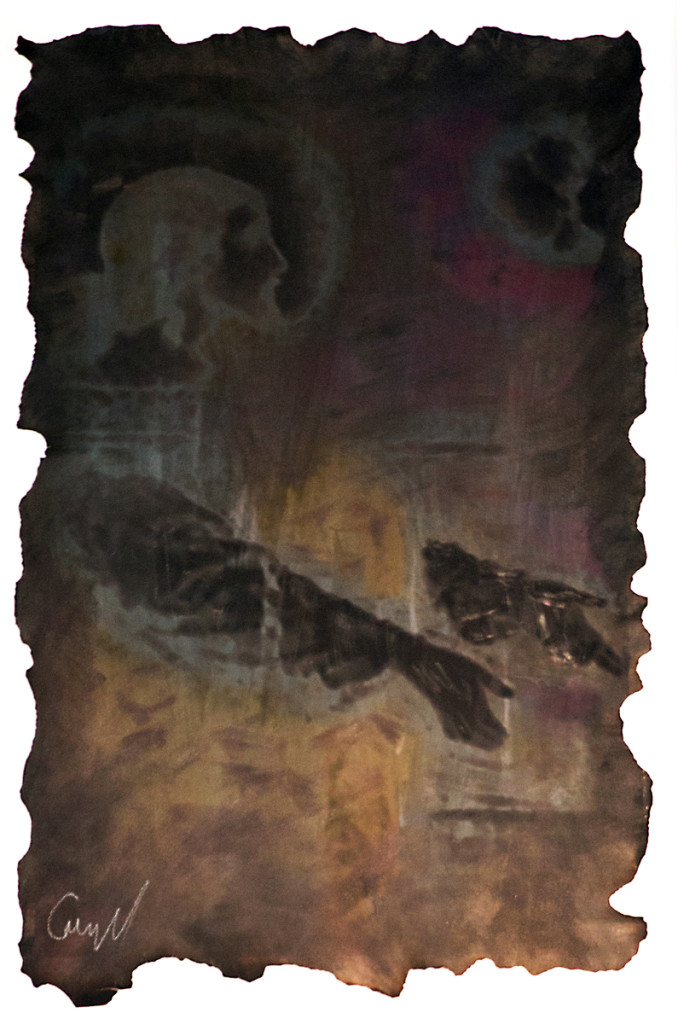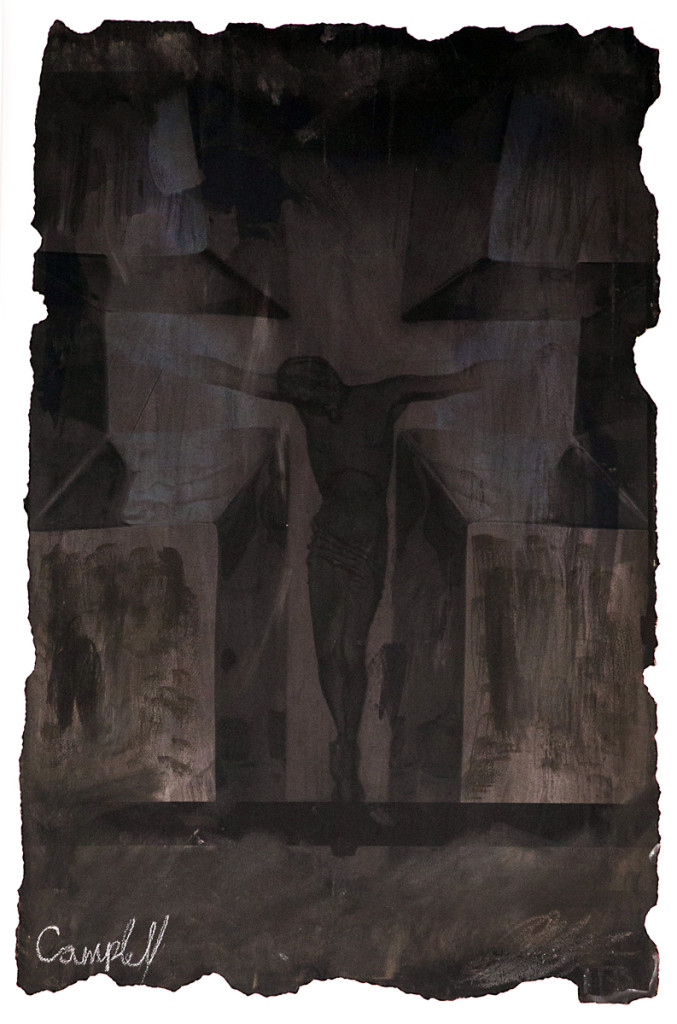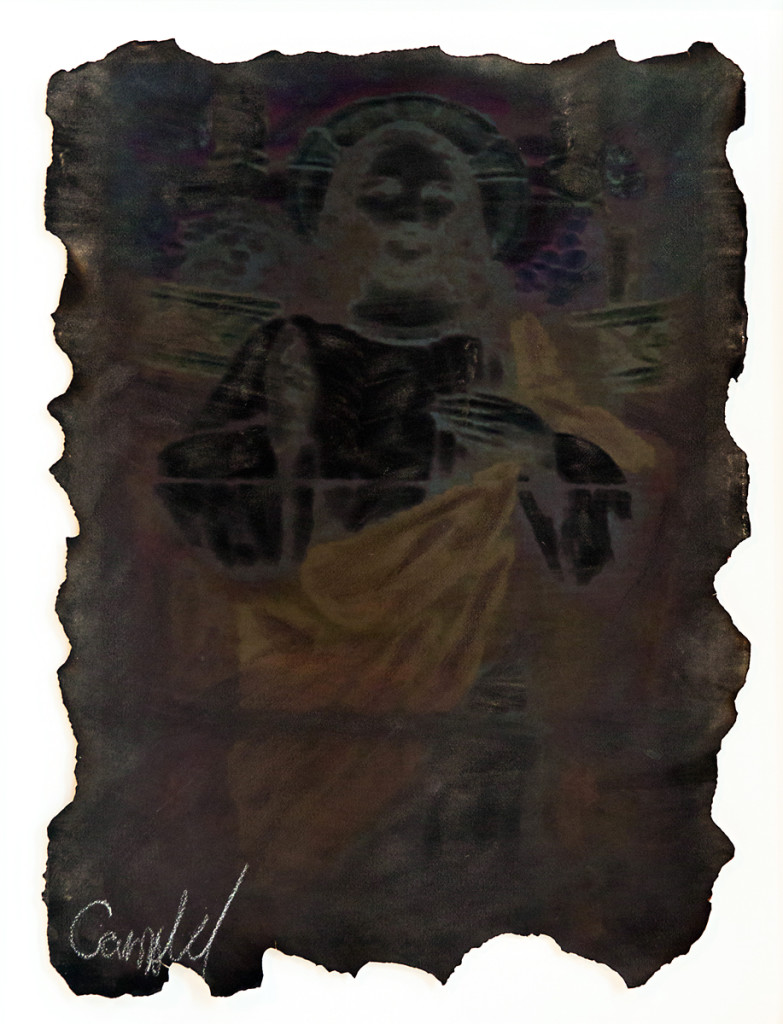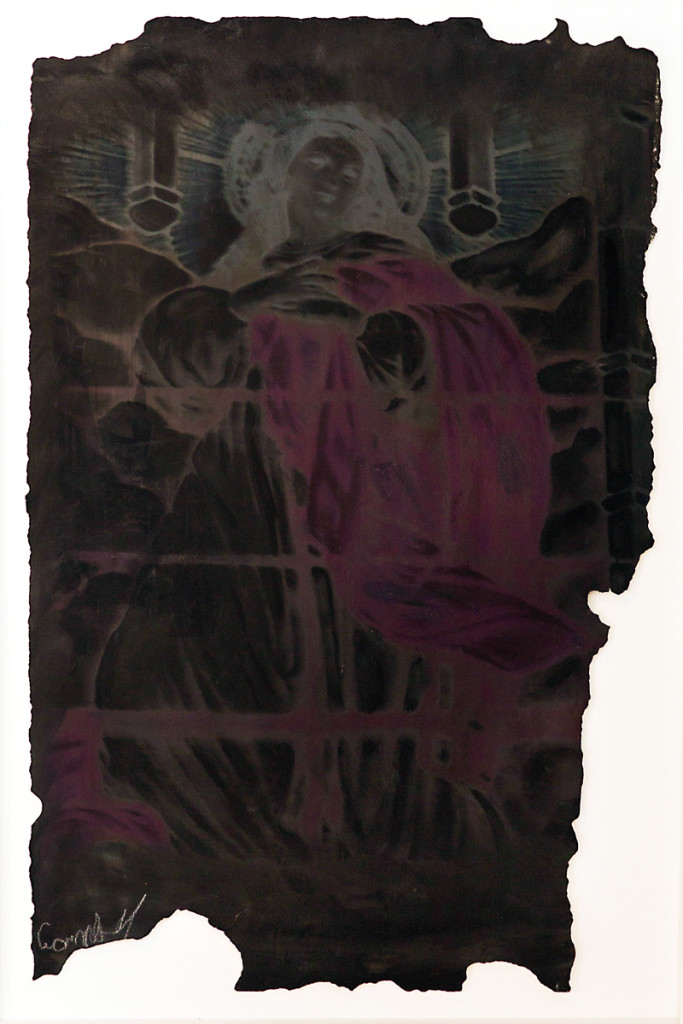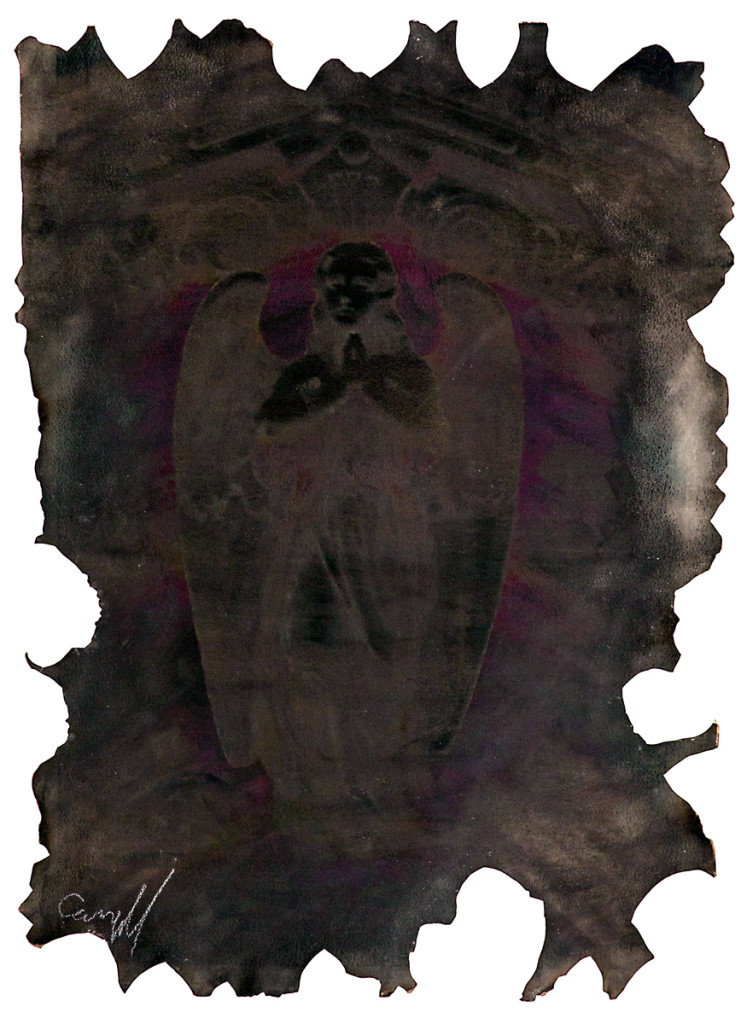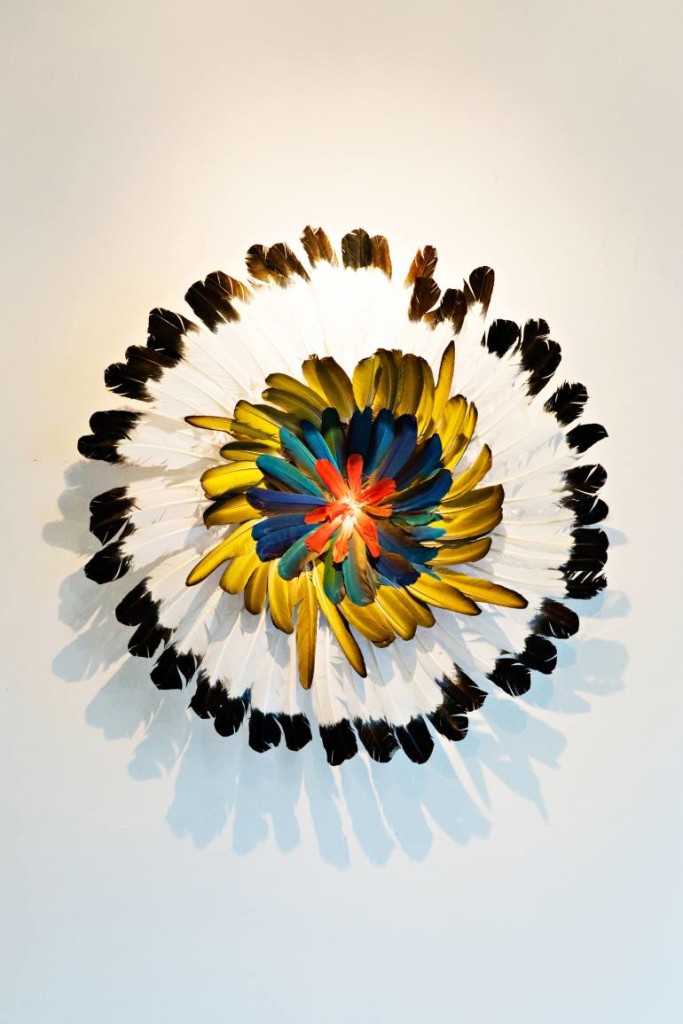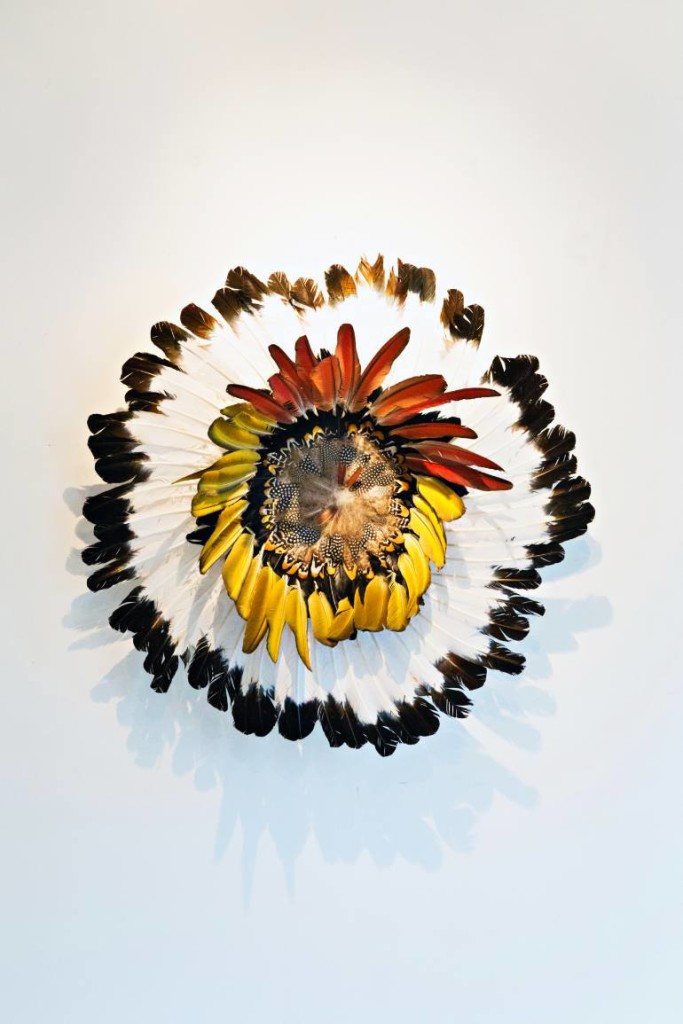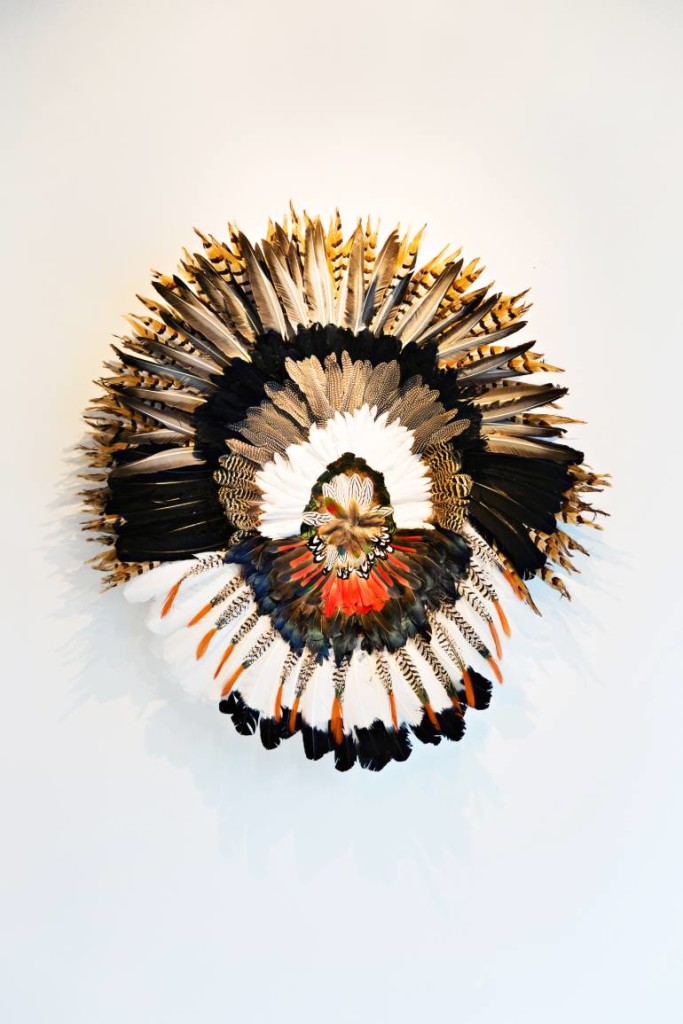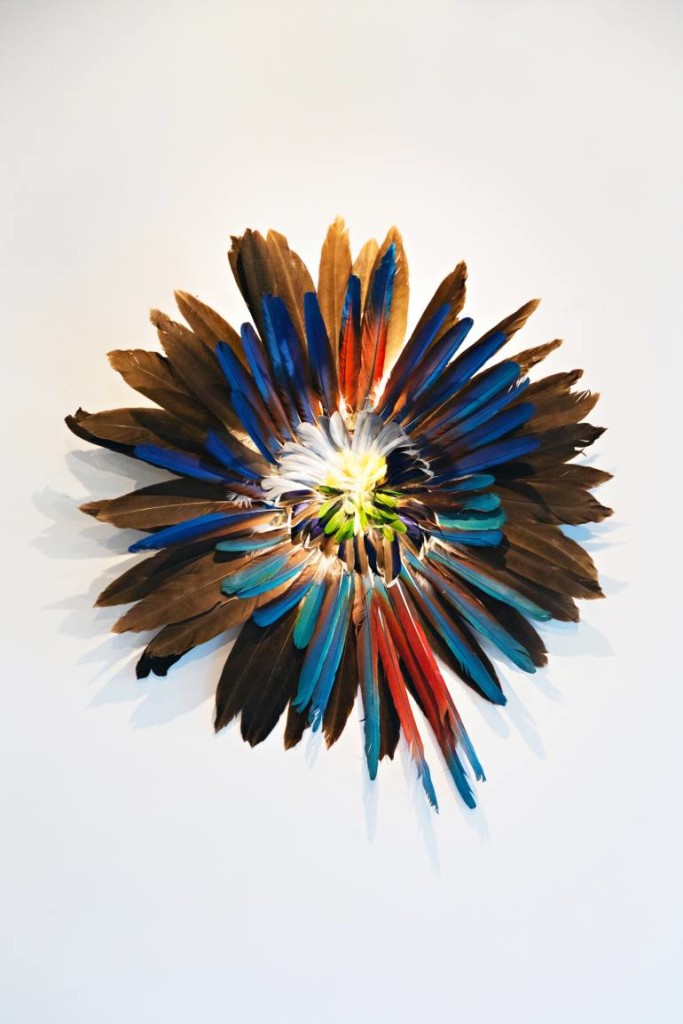Artist Scott Campbell
Black Sanctity Series
Using Egyptian cotton mounted on acid free mat boards, Scott Campbell’s pieces in the Black Sanctity line have been framed by Haruo Kimura, one of the exclusive framers for the Metropolitan Museum of Art. Each work floats purposefully in a white frame, symbolizing the light coming out of moments of darkness, its full effects truly appreciable without the obstruction that the glare of glass would cause.
Black Sanctity was created during a dark period of loss for the artist, Scott Campbell, who would spend quiet moments of reflection throughout Catholic churches in New York City. It was during this period he chose to harness the energy of faith and finding light in periods of darkness through his work. To visibly push the boundaries of finding light out of darkness, Scott chose to create all of the work using only black watercolors, creating images by infusing black watercolors with ink to pull color and light into the depths of their darkness.
In Ancient Rome, genius was considered a guiding spirit or person sent to us to inspire us to create and produce. The achievements of exceptional individuals seemed to indicate the presence of a particularly powerful genius, as it was believed that the inspiration or talent of the spirit or person helped guide these individuals and played a crucial role in their accomplishments.
The ancient tribal people of North Africa found their own displays of divinity during celebrations of the full moon, when the best dancers would gather and dance around by the fire and under the stars and the full moon. On occasion, one dancer might stand out significantly more so more than the others, in a moment when time seemed to stop and transform the dancer to become a portal, no longer merely human, illuminated from within by a divine light. Such a display awe inspiring, demanding of honor, and so those gathered around would put their hands together and chant the name of God.
The light seen in those radiant displays, the essence of God and His brilliance shining through in a mere mortal, are what drove Scott’s creation of each work in the Black Sanctity series. To this day, he believes a guardian angel was sent to him to help create the pieces; and to finish the project, Scott decided to smoke all of the work to symbolize a spark of light coming out of the darkness. Beginning his process at his studio, Scott was forced to move his work outside when neighbors complained of the smell; and he found the culmination of his creativity just outside of the Basilica of St. Patrick’s Old Cathedral in New York, where his process continued until the fire and police departments were alerted of the smell of smoke. Had it not been for what Scott believes was divine intervention, the project would have been shut down; but when an officer in charge saw the undeniable creativity of the pieces, he was merely given a warning, free to walk away into the light.
In creating Black Sanctity, Scott’s greatest hope is to pull the viewer into depths of blackness to remind them that when these moments of darkness cross our path, there is still hope that we shall find light.

